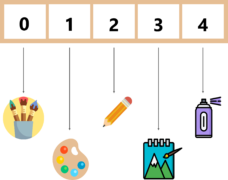

indexOf( 100, 1) = - 1) įor consistency, the includes method accepts this parameter as well: assert(. The indexOf method accepts an optional second parameter named fromIndex that specifies at which index in the array to start the search: assert(. includes( + 0) = true) #Providing a Start Index includes( NaN) = true) Īs you would expect, the signed zero values +0 and -0 are treated the same as well: assert(. The includes method fixes this behavior and returns true: assert(. Most of the time, this is likely not what you intended. Because the strict comparison NaN = NaN returns false, the indexOf method will return -1 when searching for NaN in an array: assert(.

However, there's one edge case in which indexOf and includes behave differently, and that is NaN. There's no more fiddling around with indices just to determine array membership. Notice how the if-condition almost reads like a regular English sentence. The () method makes this check easier to read and more semantically meaningful to human readers: const numbers = Up until now, you've probably compared the return value of the () method against -1 to check whether an array contains a certain value: const numbers = The other new feature is the exponentiation operator **, which provides a little syntactic sugar for Math.pow. () determines whether an array contains a given element and returns either true or false. The () method defined on the Array prototype is one of the two new features that ECMAScript 2016 standardizes.


 0 kommentar(er)
0 kommentar(er)
